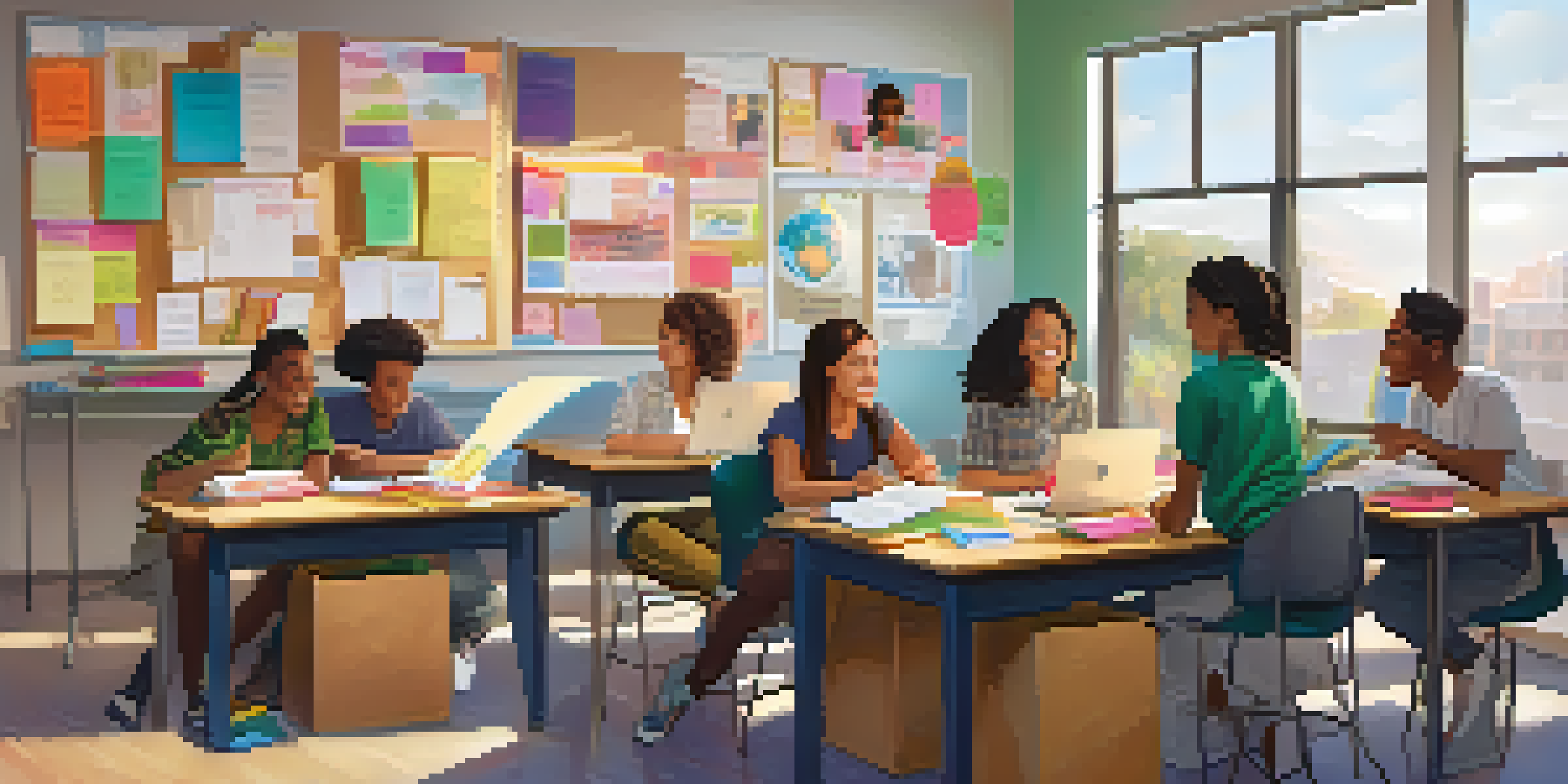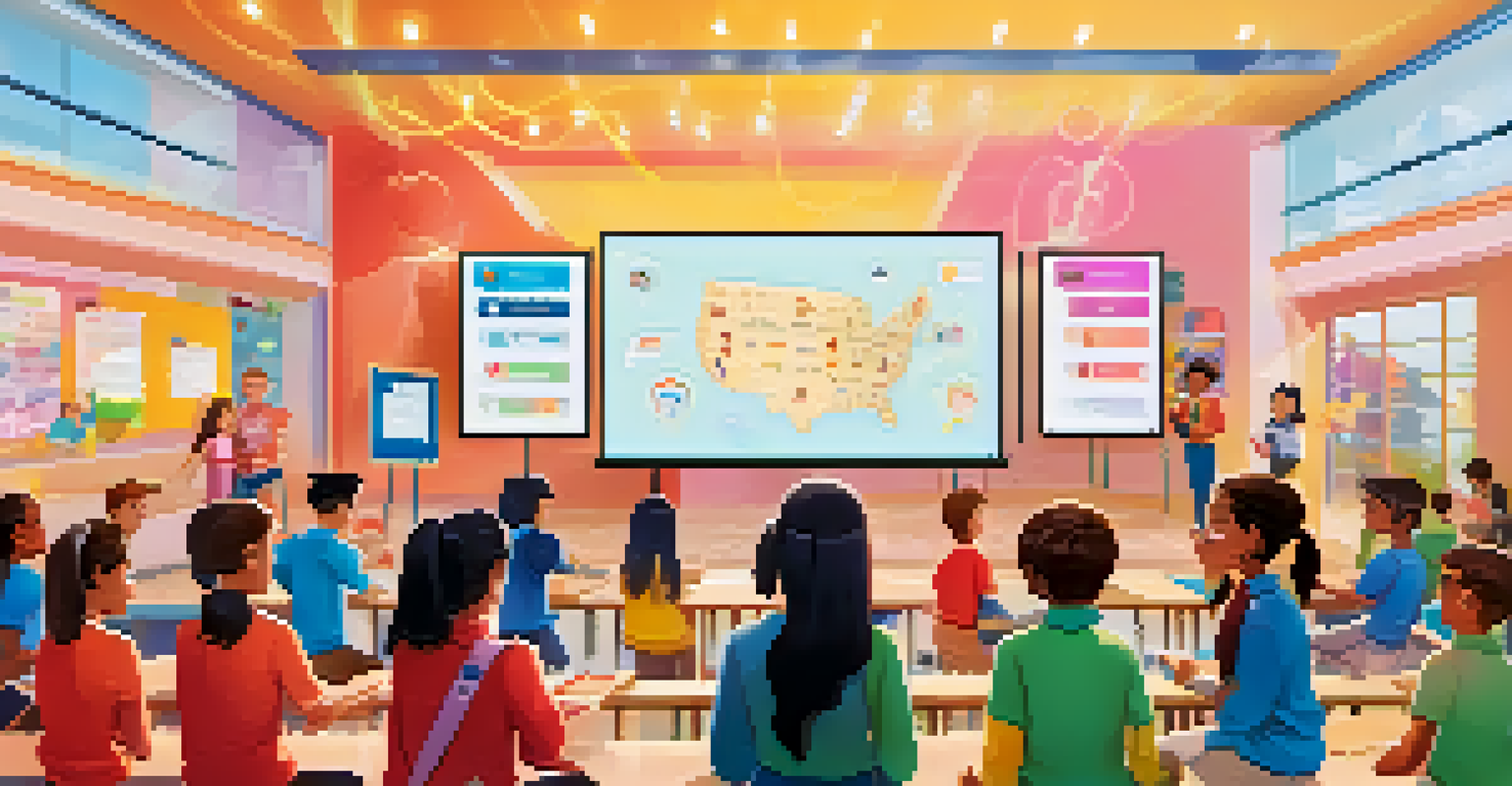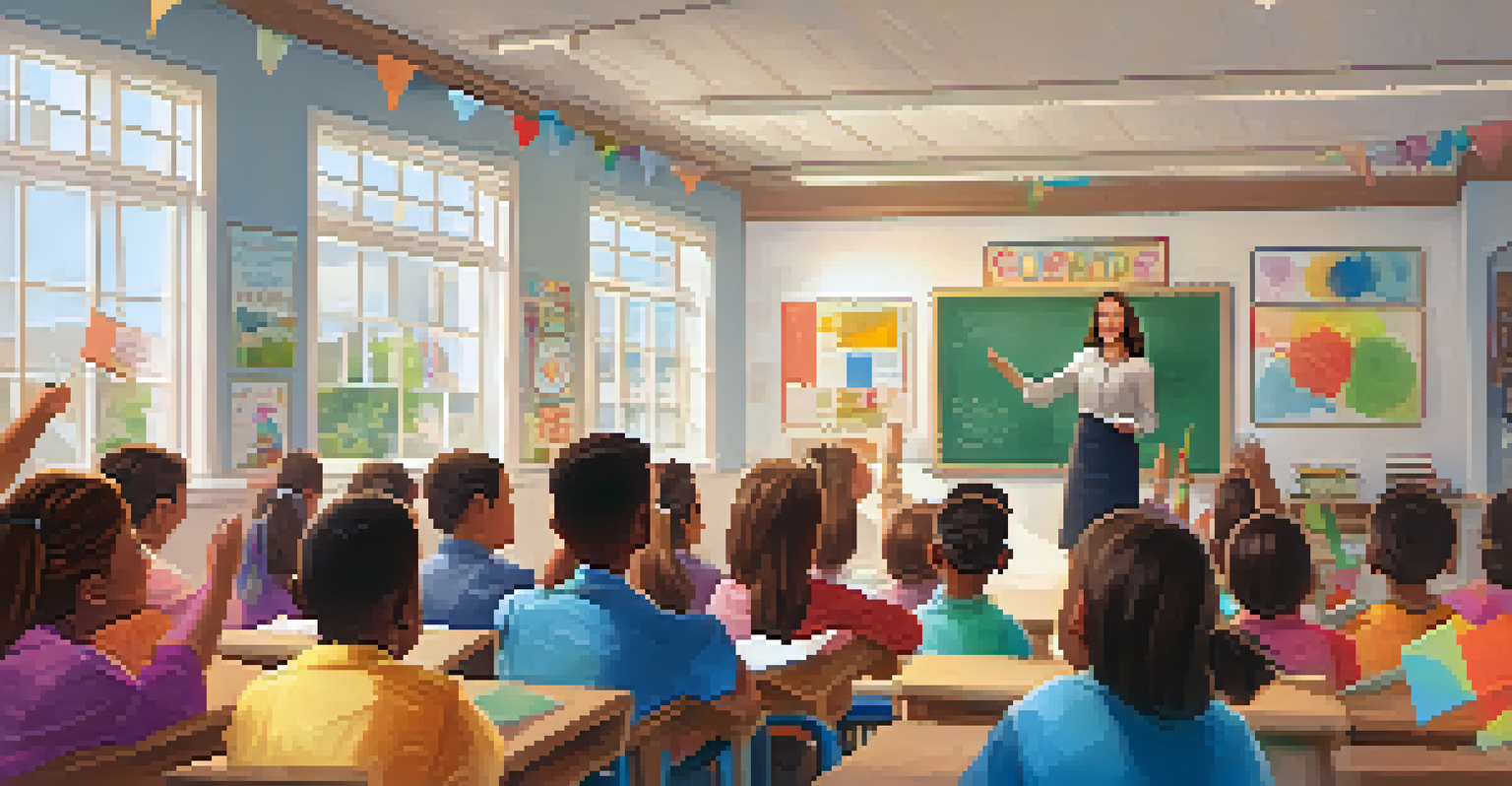Recognition Systems: Fostering Collaboration in Learning

Understanding Recognition Systems in Education
Recognition systems are frameworks designed to acknowledge and reward achievements in an educational context. They can take many forms, from formal awards to informal shout-outs among peers. By recognizing individual and group accomplishments, these systems foster a sense of belonging and motivation among learners.
Recognition is not a scarce resource. You can’t use it up or run out of it. The more you give, the more you have.
Imagine a classroom where every student’s effort is celebrated, creating an environment where everyone feels valued. This recognition not only encourages students to strive for excellence but also cultivates a collaborative spirit. When students know their contributions matter, they’re more likely to engage with their peers and participate actively.
Moreover, recognition systems can bridge gaps between students and instructors. By providing feedback and acknowledgment, educators can effectively communicate their appreciation for students’ hard work, reinforcing positive behaviors and enhancing the overall learning experience.
The Role of Collaboration in Learning
Collaboration is at the heart of effective learning. When students work together, they share diverse perspectives and skills, enriching the educational experience. In collaborative settings, learners not only absorb information but also develop critical thinking and problem-solving abilities that are essential for real-world success.

Picture a group project where students brainstorm ideas together. They challenge each other’s thoughts, leading to innovative solutions that wouldn’t have emerged in isolation. This collaborative effort mirrors workplace dynamics, preparing students for future teamwork scenarios.
Recognition Systems Foster Motivation
Recognition systems create a sense of belonging and motivate students by celebrating their achievements.
Furthermore, collaboration fosters social skills that enhance communication and interpersonal relationships. As students navigate group dynamics, they learn to negotiate, resolve conflicts, and appreciate different viewpoints, all of which are vital life skills.
How Recognition Systems Promote Teamwork
Recognition systems play a pivotal role in promoting teamwork among students. By acknowledging group achievements, these systems encourage collective efforts rather than individual pursuits. When a team receives recognition, it reinforces the idea that success is a shared journey.
Collaboration allows teachers to capture each other's fund of collective intelligence.
Consider a sports team that celebrates both individual and collective accomplishments. This dual recognition not only boosts morale but also strengthens the bond among team members. Similarly, in academic settings, recognizing group projects fosters an environment where students support and rely on each other.
Moreover, this shared recognition can lead to increased accountability within groups. When students know their efforts will be acknowledged, they are more likely to contribute actively and engage with one another, enhancing the overall collaborative experience.
Creating Effective Recognition Programs
Designing an effective recognition program requires thoughtfulness and inclusivity. The program should be accessible to all students, ensuring that every achievement, big or small, is acknowledged. This approach not only motivates students but also promotes a sense of community.
For instance, a school might implement a 'Student of the Month' program that highlights various attributes, such as teamwork, creativity, and leadership. By diversifying the criteria for recognition, the program celebrates a range of talents and encourages students to support each other in different ways.
Collaboration Enhances Learning
Working together allows students to share perspectives and develop essential skills for real-world success.
Additionally, involving students in the recognition process can enhance its impact. When learners have a say in how achievements are celebrated, they feel a greater connection to the program and its goals, fostering a more collaborative atmosphere.
The Impact of Technology on Recognition Systems
Technology has revolutionized how recognition systems operate in learning environments. Digital platforms enable instant acknowledgment of achievements, making recognition more immediate and impactful. This quick feedback loop keeps students motivated and engaged.
Imagine a classroom where students receive badges or points for their contributions through an online platform. This gamification of recognition not only makes the process fun but also encourages healthy competition among peers. Technology facilitates real-time updates, allowing students to track their progress and celebrate milestones together.
Moreover, technology can help educators personalize recognition efforts. By analyzing data on student performance, teachers can tailor their acknowledgments to meet individual needs, ensuring that recognition feels meaningful and relevant.
Challenges in Implementing Recognition Systems
While recognition systems offer numerous benefits, they also come with challenges. One significant issue is ensuring that recognition is fair and unbiased. If certain students consistently receive accolades while others are overlooked, it can lead to feelings of resentment and disengagement.
To combat this, educators must strive for transparency in their recognition criteria. By clearly communicating how achievements are evaluated, they can foster a sense of fairness and inclusivity. Additionally, involving students in the development of these criteria can enhance buy-in and reduce potential biases.
Technology Transforms Recognition
Digital platforms enable instant feedback and personalized recognition, making the process more engaging for students.
Another challenge is maintaining the balance between competition and collaboration. While a little competition can be motivating, excessive focus on individual accomplishments may undermine teamwork. Striking the right balance is crucial to ensuring that recognition systems truly foster collaboration.
Future Trends in Recognition Systems
As educational landscapes continue to evolve, recognition systems are also undergoing transformation. One emerging trend is the integration of social recognition platforms that allow peers to acknowledge each other’s contributions. This shift toward peer recognition enhances collaboration and builds a supportive community.
Additionally, the focus on mental health and well-being is reshaping recognition systems. Educators are increasingly recognizing the importance of acknowledging effort and resilience, rather than just academic achievements. This holistic approach promotes a growth mindset among students, encouraging them to value their progress.

Finally, as technology continues to advance, we can expect to see more innovative recognition tools that facilitate real-time feedback and engagement. These tools will not only streamline the recognition process but also create more opportunities for collaboration and connection among learners.